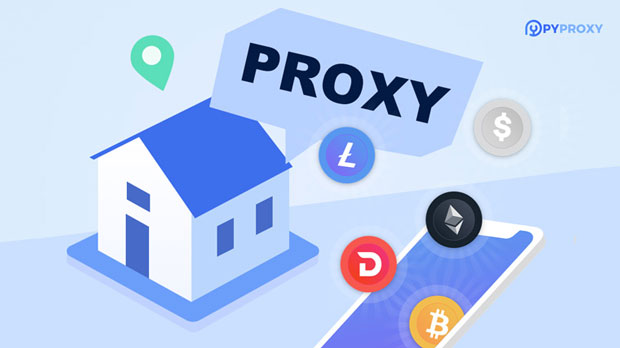In today’s digital world, online privacy and data security are more important than ever. One common way to enhance privacy and security is by using proxies. However, many users wonder whether using a proxy with Microsoft Edge browser ensures data encryption. Proxies are often used to mask IP addresses and route traffic through remote servers, but do they offer encryption? This article aims to explore how proxies work with Microsoft Edge and whether they provide data encryption, while also discussing the advantages, limitations, and potential security concerns. Understanding Proxies and Data EncryptionBefore delving into whether proxies encrypt data when using Edge browser, it’s essential to understand the basic functions of proxies and encryption.A proxy server acts as an intermediary between the user and the destination server, allowing users to browse the internet without revealing their true IP addresses. Proxies are often used to bypass geo-restrictions, access blocked content, or simply improve privacy. However, it is important to note that while proxies mask the IP address, they do not inherently encrypt the data being transmitted.On the other hand, data encryption is the process of converting readable data into an unreadable format, which can only be decrypted with the right key. This is a vital aspect of ensuring that sensitive data remains protected from unauthorized access during transmission. Encryption typically occurs when a secure connection is established using protocols like SSL/TLS, which are most commonly seen in HTTPS websites.How Proxies and Edge Work TogetherWhen using a proxy server with Microsoft Edge, the data is routed through the proxy before reaching its destination. However, unless the proxy itself explicitly supports encryption, it does not encrypt the data. This means that although your IP address is hidden from the destination server, any data sent through the proxy remains unencrypted and could be intercepted by malicious actors or third parties during transmission.It is important to differentiate between different types of proxies, as their functionalities can vary significantly:1. HTTP Proxy: This type of proxy only handles HTTP traffic. While it masks the user’s IP address, it does not provide encryption for the data being transferred. This makes it susceptible to interception during the communication process. 2. HTTPS Proxy: An HTTPS proxy can support encrypted traffic to some extent. It can establish an encrypted connection between the user’s device and the proxy server. However, it does not necessarily encrypt the entire data flow from the user to the destination server, making it less secure than other encryption methods. 3. SOCKS Proxy: SOCKS proxies can support any type of internet traffic, including HTTP, FTP, and P2P traffic. They provide anonymity by hiding the user’s IP address, but like HTTP proxies, they do not encrypt the data being sent. 4. VPN (Virtual Private Network): A VPN is often mistakenly grouped with proxies. However, unlike proxies, VPNs encrypt all data transmitted over the network. By using a VPN, data is not only routed through a remote server but also encrypted, providing an additional layer of security.Thus, while proxies can enhance privacy by hiding the IP address, they do not typically provide full encryption unless paired with other encryption technologies.The Role of Edge’s Security FeaturesMicrosoft Edge, like most modern browsers, includes various security features designed to protect users while browsing. These features include anti-tracking technologies, sandboxing, and phishing protection. However, the use of a proxy does not automatically trigger additional encryption layers within Edge itself.When a proxy is configured on Edge, the browser will continue to communicate with websites using standard HTTP or HTTPS protocols, depending on the website’s configuration. If a website supports HTTPS, the data will be encrypted from the server to the browser, but this encryption happens independently of the proxy server. The proxy itself does not add encryption to the connection unless it is specifically designed to do so.Limitations and Security ConcernsWhile proxies can be useful for privacy and bypassing regional restrictions, they come with several limitations, especially regarding encryption:1. Data Interception: Since most proxies do not provide encryption, the data can be intercepted and read by third parties, such as hackers, ISPs, or government agencies. This is particularly concerning when using public or unreliable proxy servers. 2. Unreliable Proxies: Not all proxy services are trustworthy. Free proxies, in particular, may log user data or inject malware into your browsing sessions. Choosing a reputable proxy service is crucial to maintaining security and privacy.3. Lack of End-to-End Encryption: Even if you use a proxy with Microsoft Edge, data is still not fully encrypted from end to end unless you use HTTPS websites. The data passing through the proxy can be exposed if the proxy does not provide adequate security.4. No Protection from Malicious Servers: Some proxies, especially free ones, may themselves be malicious. They might expose users to phishing attacks or inject harmful scripts into web pages, compromising both privacy and security.How to Ensure Data Encryption While Using EdgeTo ensure data encryption while using Microsoft Edge, it is important to combine proxies with other security measures. Some steps you can take to enhance your security include:1. Use HTTPS Websites: Always prioritize websites that support HTTPS over HTTP. HTTPS ensures that the data transmitted between your browser and the website is encrypted.2. Use a VPN for Full Encryption: If encryption is a priority, using a VPN is a better choice than a proxy. A VPN will encrypt all your internet traffic, including your connection to the proxy, ensuring that your data remains secure.3. Select a Reliable Proxy Provider: If using a proxy, ensure that the service supports encryption or uses secure protocols. Some premium proxy services provide SSL/TLS encryption, which can enhance security.4. Enable Edge Security Features: Ensure that Microsoft Edge’s built-in security features, such as Enhanced Tracking Protection and SmartScreen, are enabled to protect against malicious websites and content.In conclusion, using a proxy with Microsoft Edge does not automatically guarantee data encryption. While proxies can mask your IP address and provide a level of anonymity, they do not typically encrypt the data being transmitted. For full data encryption, a VPN is a more secure option. Users should be aware of the limitations and risks associated with proxies, especially when considering data interception and security concerns. To maximize online privacy and security, combining proxies with HTTPS websites or using a VPN for encryption is highly recommended.
May 22, 2025


































































